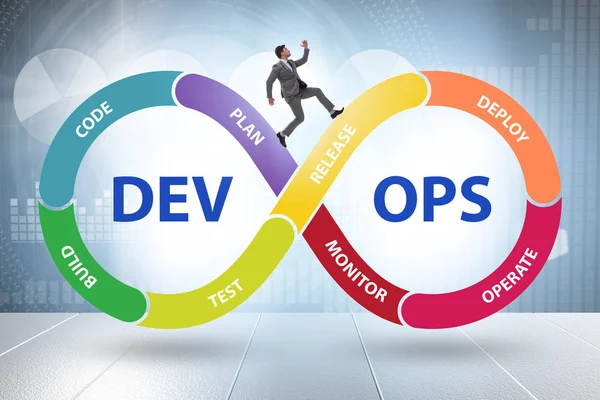Introduction :
In the fast-paced world of software development, organizations are constantly seeking ways to enhance their software delivery process. Two popular methodologies that have gained significant attention are DevOps and Scrum. DevOps focuses on improving collaboration and integration between development and operations teams, while Scrum offers a framework for agile project management. Combining these two approaches can lead to more efficient and effective software delivery. In this blog post, we will explore how to leverage the power of DevOps and Scrum to optimize your software delivery process, resulting in improved productivity, quality, and customer satisfaction.
Section 1: Understanding DevOps
To begin, let’s delve into the concept of DevOps and its key principles. DevOps emphasizes the integration of development and operations, aiming to break down silos and create a culture of collaboration and shared responsibility. By promoting continuous integration, automated testing, and continuous delivery, DevOps fosters faster development cycles and ensures higher-quality software. Continuous integration allows developers to frequently merge their code changes into a central repository, enabling early detection of integration issues. Automated testing ensures that software changes are thoroughly tested, reducing the risk of defects and improving overall software quality. Continuous delivery allows for rapid and reliable software releases, enabling organizations to quickly respond to customer needs and market demands. Additionally, DevOps encourages the use of infrastructure as code (IaC) and deployment automation, enabling more consistent and reliable software releases. With IaC, infrastructure configurations are defined in code, making it easier to manage and replicate infrastructure environments.

Section 2: Unveiling Scrum
Now, let’s explore Scrum, an agile project management framework that helps teams deliver software iteratively and incrementally. Scrum operates through short, time-boxed iterations called sprints, during which teams plan, develop, test, and deliver valuable increments of the software. The Scrum framework comprises various roles, such as the Product Owner, Scrum Master, and Development Team, all working together to maximize transparency, inspection, and adaptation. Scrum provides a structured approach to managing software development projects, fostering flexibility, and enabling teams to quickly respond to changing requirements. Through the use of user stories, the Product Owner defines the desired functionalities from the user’s perspective. The Development Team collaborates to estimate, plan, and implement these user stories within the sprint. The Scrum Master ensures that the team adheres to the Scrum principles and facilitates the removal of any impediments that may hinder progress. Regular ceremonies, such as daily stand-up meetings, sprint planning, sprint reviews, and retrospectives, promote transparency, feedback, and continuous improvement.
Section 3: Leveraging the Synergy
When DevOps and Scrum are combined, their strengths complement each other, creating a powerful synergy that can revolutionize software delivery. Here are some key strategies for leveraging this synergy:
1. Collaboration and Communication:
DevOps and Scrum both emphasize collaboration and effective communication. Encourage cross-functional teams to work closely together, facilitating seamless knowledge sharing and continuous feedback. Regular stand-up meetings, sprint reviews, and retrospectives promote transparency and foster a culture of continuous improvement. By bringing development, operations, and other stakeholders together, organizations can address issues and make informed decisions collaboratively.
2. Automation and Continuous Integration:
DevOps encourages automation throughout the software development lifecycle, and Scrum emphasizes continuous integration. By automating processes such as code integration, testing, and deployment, you can ensure faster and more reliable software delivery. Tools like Jenkins, GitLab, and Docker can assist in automating these processes. Automated testing can be integrated into the CI/CD pipeline to provide quick feedback on the quality of software changes. This automation
helps reduce errors, shorten feedback loops, and enables more frequent releases.
3. Infrastructure as Code (IaC):
Adopting infrastructure as code practices allows you to manage your infrastructure through version-controlled code, enabling consistency and reproducibility. This aligns with DevOps principles and supports the iterative and incremental nature of Scrum. Infrastructure automation tools like Terraform and Ansible can be utilized to define and manage your infrastructure as code. By treating infrastructure configurations as code, organizations can ensure that infrastructure changes are tested, versioned, and deployed consistently alongside software changes, reducing the risk of configuration drift and improving overall system stability.
4. Continuous Improvement:
Continuous improvement is at the heart of both DevOps and Scrum. Encourage regular retrospectives at the end of each sprint to reflect on what went well and identify areas for improvement. Use the insights gained from retrospectives to refine your processes, enhance collaboration, and optimize your software delivery pipeline. Consider implementing metrics and monitoring systems to gain visibility into the performance of your software delivery process. By measuring key metrics like lead time, deployment frequency, and mean time to recover, organizations can identify bottlenecks and continuously refine their practices.
Conclusion:
DevOps and Scrum offer complementary approaches to improving software delivery. By embracing DevOps principles such as collaboration, automation, and continuous integration, while leveraging the iterative and adaptive nature of Scrum, organizations can achieve faster, more reliable software releases. Remember to foster effective communication, automate processes, adopt infrastructure as code practices, and promote a culture of continuous improvement. By combining the strengths of DevOps and Scrum, you can transform your software delivery process, enhance productivity, deliver high-quality software, and increase customer satisfaction.









